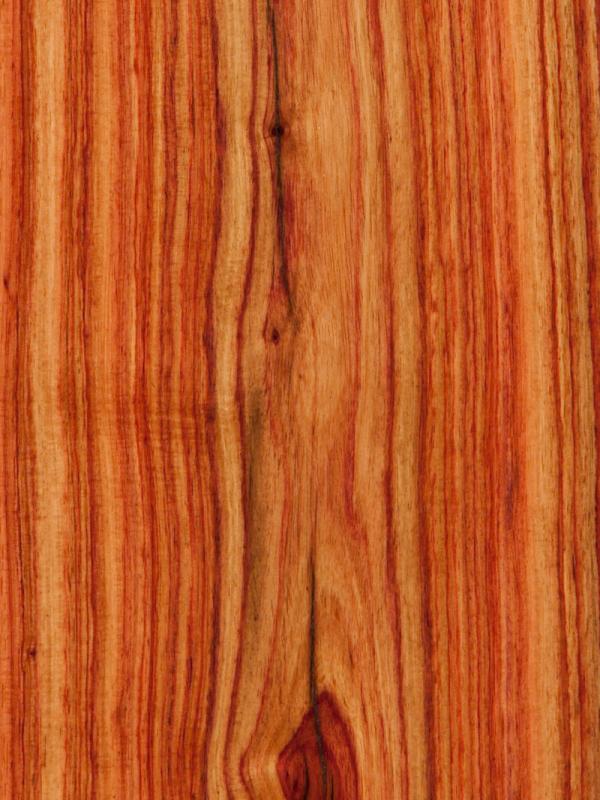
Family: Leguminosae Family.
Latin Name: Dalbergia Decipularis.
Origin: South America. Exclusive to Northeastern Brazil.
Common Names: Brazilian Tulipwood, Jacaranda Rosa, Pau de Fuso, Pinkwood, Tulipwood.
The Tree (Characteristics): A Tulipwood Tree grows to heights of approximately 20 to 40 feet tall with a trunk that is less than 1 foot in diameter. The evergreen foliage consists of pinnately compound green leaves. The bark of the tree is gray in color and can have either a smooth or rough surface. The Tulipwood Tree is a long-lived, slow-growing tree that requires a minimum of 100 years to reach maturity.
Appearance of Wood: The heartwood ranges from a crème color to a salmon color and is highlighted by striping in color combinations of red, violet, purple, pink, and rose hues. The heartwood color gradually fades with sun exposure. Sapwood is pale to very pale yellowish-white. Tulipwood typically has grains that are straight, although grains that are wavy or irregular are not uncommon.
Density: Tulipwood is considered a very dense wood. Average reported specific gravity ranges from .88 to .97 with an average dried weight of 60 pounds per cubic foot. Janka Hardness is 2,500 pounds of force.
Drying and Shrinkage: Reported to be stable in use with shrinkage rates like other Rosewoods.
Working Properties: Due to the density of Tulipwood, it can be very challenging to work with. It will blunt cutting edges and tools. The presence of natural oils in the wood makes it difficult for use in glue-up projects. Although this wood is difficult to work with, it can be turned beautifully and finishes extremely well, polished to a high luster.
Durability: Tulipwood is considered resistant to insect attack but has a low decay resistance.
Uses: Veneer, inlay work, marquetry, turnery, bandings, jewelry boxes, archery bows, pool cues, musical instrument applications, and small specialty items. It is rare to see Tulipwood used in furniture projects.
Availability: The supply of Tulipwood lumber tends to be inconsistent due not only to the small tree size but also due to a limited natural range. It is listed on CITES Appendix II under the genus-wide restriction on all Dalbergia species – including finished products made of the wood.